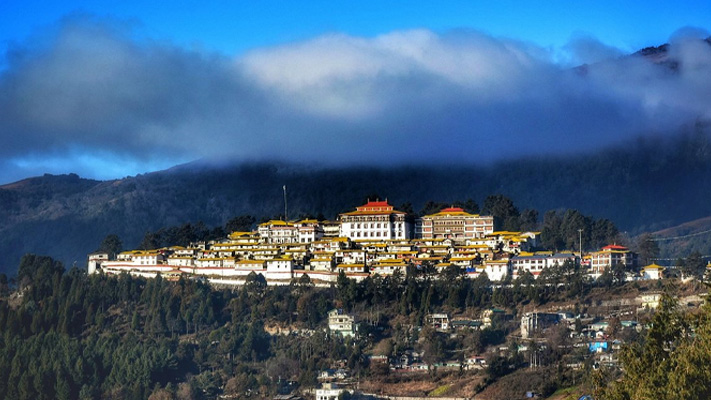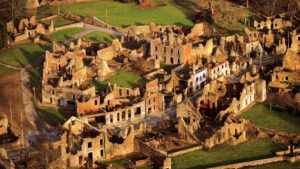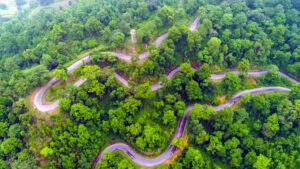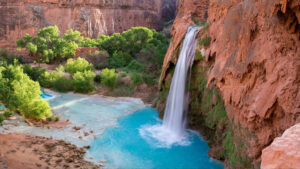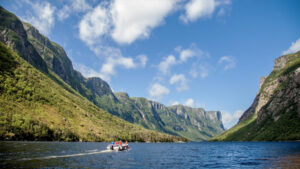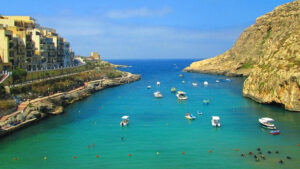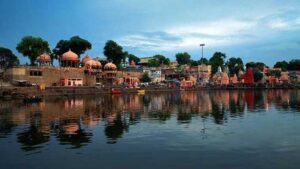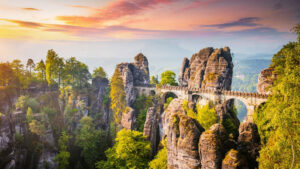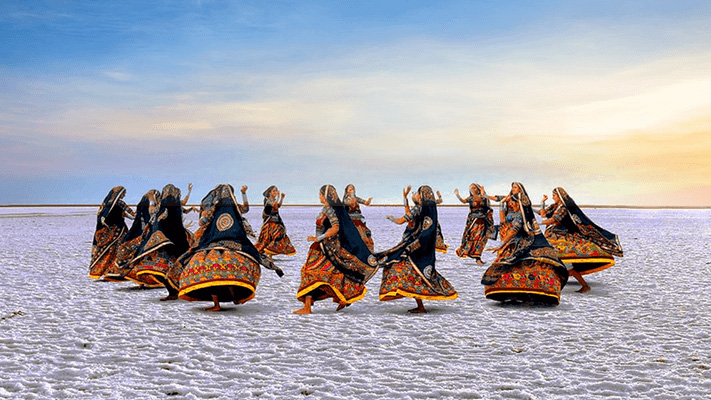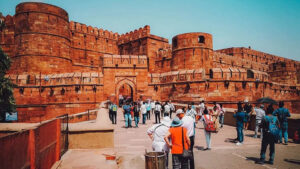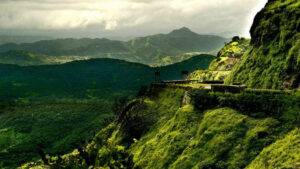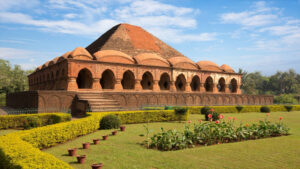TAWANG MONASTERY, ARUNACHAL PRADESH – EMBRACE TRANQUILITY IN AN ENCHANTING ABODE

The Tawang Monastery, located in Arunachal Pradesh, is a revered Buddhist monastery and a significant cultural landmark in India. It holds great religious and historical significance and attracts visitors from far and wide. Situated at an elevation of about 10,000 feet, the monastery offers breathtaking views of the surrounding mountains and valleys. It is the largest monastery in India and the second-largest in the world.

The monastery is known for its stunning architecture, intricate murals, and a vast collection of Buddhist scriptures and artifacts. It serves as the spiritual hub for Buddhist monks and is an important center for Buddhist learning. The monastery also hosts various festivals and rituals throughout the year, including the grand Torgya Festival, which showcases traditional dances, music, and religious ceremonies.
Inside the Monastery
Inside Tawang Monastery, there are several sections and structures that hold religious and cultural significance. Here is an overview of what you can find inside:
- Dukhang (Assembly Hall): The main assembly hall, known as Dukhang, is the heart of Tawang Monastery. It is a large hall where daily prayers, rituals, and religious ceremonies take place. The walls of the hall are adorned with colorful murals depicting Buddhist deities, scenes from the life of Buddha, and other religious themes. The hall also houses statues and thangkas (scroll paintings) of Buddhist figures.
- Inner Sanctum: Within the monastery, there is an inner sanctum that houses the most sacred relics and artifacts. It is a restricted area accessible only to senior monks and officials. The inner sanctum is believed to hold sacred scriptures, ancient manuscripts, and relics of revered Buddhist teachers.
- Residential Quarters: The monastery comprises numerous residential quarters for the resident monks. These quarters are simple dwellings where the monks live and engage in their daily routines of study, meditation, and religious practices.
- Monastic School: Tawang Monastery has a monastic school called “Tawang Higher Secondary School” where young monks receive education and training in Buddhist philosophy, ritual practices, and other subjects. The school plays a crucial role in preserving and propagating Tibetan Buddhist traditions.
- Stupas and Chortens: The monastery complex features several stupas and chortens (Buddhist shrines). These structures are built to honor and commemorate important Buddhist figures or events. They serve as places of worship and meditation for the monks and devotees.
- Prayer Wheels: Tawang Monastery has prayer wheels, which are cylindrical wheels inscribed with Buddhist prayers. The belief is that spinning these wheels invokes blessings and spreads positive energy. Visitors can rotate these prayer wheels as they circumambulate the monastery.
Visitor Experiences and Activities
When visiting Tawang Monastery, there are several experiences and activities that visitors can engage in. Here are some of the notable ones:

- Explore the Monastery Complex: Take a leisurely walk through the monastery complex to soak in its architectural beauty and serene surroundings. Marvel at the intricate details of the buildings, admire the vibrant murals and statues, and enjoy the peaceful atmosphere.
- Attend Prayer Ceremonies: Witness the daily prayer ceremonies held at the monastery. These ceremonies often involve chanting, drumming, and the sound of traditional instruments. Observing these rituals can be a deeply spiritual and meditative experience.
- Participate in Meditation: Some monasteries offer meditation sessions for visitors, allowing them to experience the peaceful and introspective aspects of Buddhism. Joining a meditation session led by the monks can provide a glimpse into the practice of mindfulness and inner contemplation.
- Visit the Library: If permitted, explore the monastery’s library and browse through its collection of Buddhist scriptures, texts, and manuscripts. The library is a treasure trove of knowledge and offers an opportunity to delve deeper into the teachings and philosophy of Buddhism.
- Attend Festivals: If your visit coincides with a festival, such as the Tawang Torgya Festival, make sure to attend and witness the vibrant celebrations. Festivals feature traditional dances, music, masked performances, and elaborate rituals, providing a colorful and lively experience.
- Enjoy Scenic Views: Tawang Monastery is situated in a picturesque location, offering stunning views of the surrounding mountains, valleys, and the Tawang-Chu River. Take the time to admire the natural beauty of the region and capture some memorable photographs.
- Shop for Souvenirs: Before leaving, browse the small shops and stalls near the monastery that sell traditional handicrafts, prayer flags, Buddhist artifacts, and other souvenirs. These items make for meaningful keepsakes of your visit to Tawang.
Top Attractions
Apart from the Tawang Monastery, there are several other attractions in and around Tawang that you can explore. Here are some of the top attractions in the region:

- Tawang War Memorial: Located in close proximity to Tawang town, the Tawang War Memorial is dedicated to the Indian soldiers who sacrificed their lives during the 1962 Indo-China War. The memorial consists of a stupa-like structure, a museum showcasing historical artifacts, and a beautiful landscaped garden. It offers panoramic views of the Tawang Valley and is a significant historical site.
- Sela Pass: Situated at an altitude of 13,700 feet (4,200 meters), Sela Pass is a mountain pass located on the way to Tawang. It offers breathtaking views of snow-capped peaks, frozen lakes, and stunning landscapes. The pass is adorned with colorful prayer flags, and the nearby Sela Lake adds to the scenic beauty.
- Madhuri Lake (Shonga-Tser Lake): Also known as the Madhuri Dixit Lake, this serene lake gained fame after it was featured in the Bollywood film “Koyla” starring Madhuri Dixit. The lake is surrounded by mountains and offers a tranquil setting for picnics and leisurely walks. The reflections of the surrounding peaks on the crystal-clear waters make it a picturesque spot.
- P.T. Tso Lake (Pangateng Tso Lake): Located about 17 kilometers from Tawang, P.T. Tso Lake is another picturesque lake surrounded by lush greenery and snow-capped mountains. The lake is known for its clear blue waters and is a great spot for photography and nature lovers.
- Gorsam Chorten: Situated around 100 kilometers from Tawang, Gorsam Chorten is a revered stupa located in the Zemithang region. It is believed to have been built in the 12th century and is an important pilgrimage site for Buddhists. The scenic journey to Gorsam Chorten offers stunning views of the Himalayas and the opportunity to witness the local tribal culture.
- Bap Teng Kang Waterfall: Located near Tawang town, Bap Teng Kang Waterfall is a beautiful natural attraction. The waterfall cascades down from a height of around 100 feet (30 meters) amidst lush greenery. It is an ideal spot for nature enthusiasts and offers a refreshing break from the bustling town.
- Nuranang Falls: Also known as Jang Falls, Nuranang Falls is a captivating waterfall located around 40 kilometers from Tawang. It is a two-tiered waterfall that drops from a height of approximately 100 meters. The picturesque surroundings, including the dense forests and the snow-clad peaks, add to its beauty.
- Taktsang Gompa: Located about 50 kilometers from Tawang, Taktsang Gompa is a stunning monastery perched atop a hill. It offers panoramic views of the Tawang-Chu Valley and is known for its unique architectural style. The monastery is believed to have been blessed by Guru Padmasambhava, a revered figure in Tibetan Buddhism.

Best Time to Visit
The best time to visit Tawang and its surroundings is during the months of April to October when the weather is relatively pleasant and the region is accessible. Here’s a breakdown of the weather conditions and the events and festivals you can experience in Tawang:
- Weather:
The months of April to October offer the best weather conditions for exploring Tawang and its attractions. The summer and autumn seasons are particularly favorable, providing comfortable temperatures and clear skies for enjoying the natural beauty of the region.
- Events and Festivals:
- Losar Festival: Losar, the Tibetan New Year, is one of the major festivals celebrated in Tawang. It usually falls in February or March, depending on the Tibetan lunar calendar. During Losar, you can witness vibrant cultural performances, traditional music and dance, and participate in religious rituals.
- Tawang Torgya Festival: This three-day festival is celebrated in January at Tawang Monastery. It is a vibrant and colorful festival featuring masked dances, religious ceremonies, and rituals performed by the monks. The festival aims to dispel evil spirits and bring peace and prosperity to the community.
- Choekhor Festival: Celebrated in November, the Choekhor Festival is an important Buddhist festival in Tawang. During this festival, monks perform religious dances, chant prayers, and participate in various rituals. The festival provides insights into Buddhist traditions and offers a festive atmosphere.
It’s important to note that festival dates may vary from year to year, so it is recommended to check the specific dates of events and festivals before planning your visit to Tawang.


